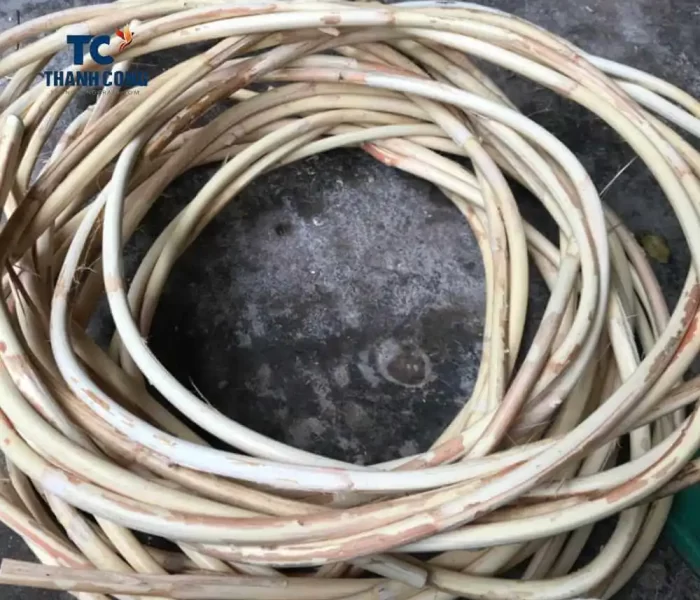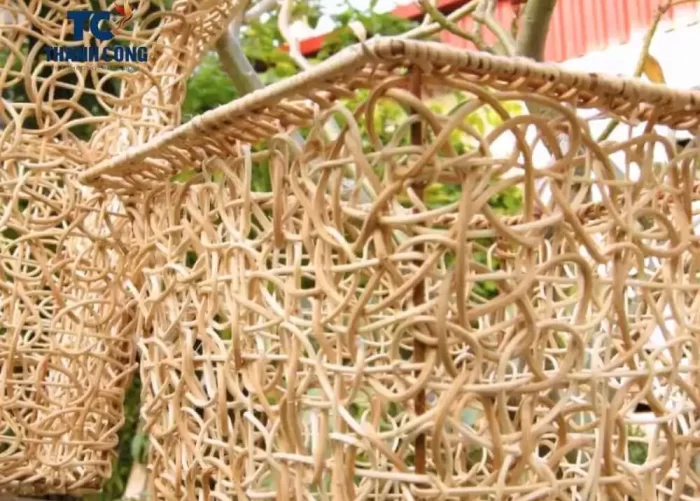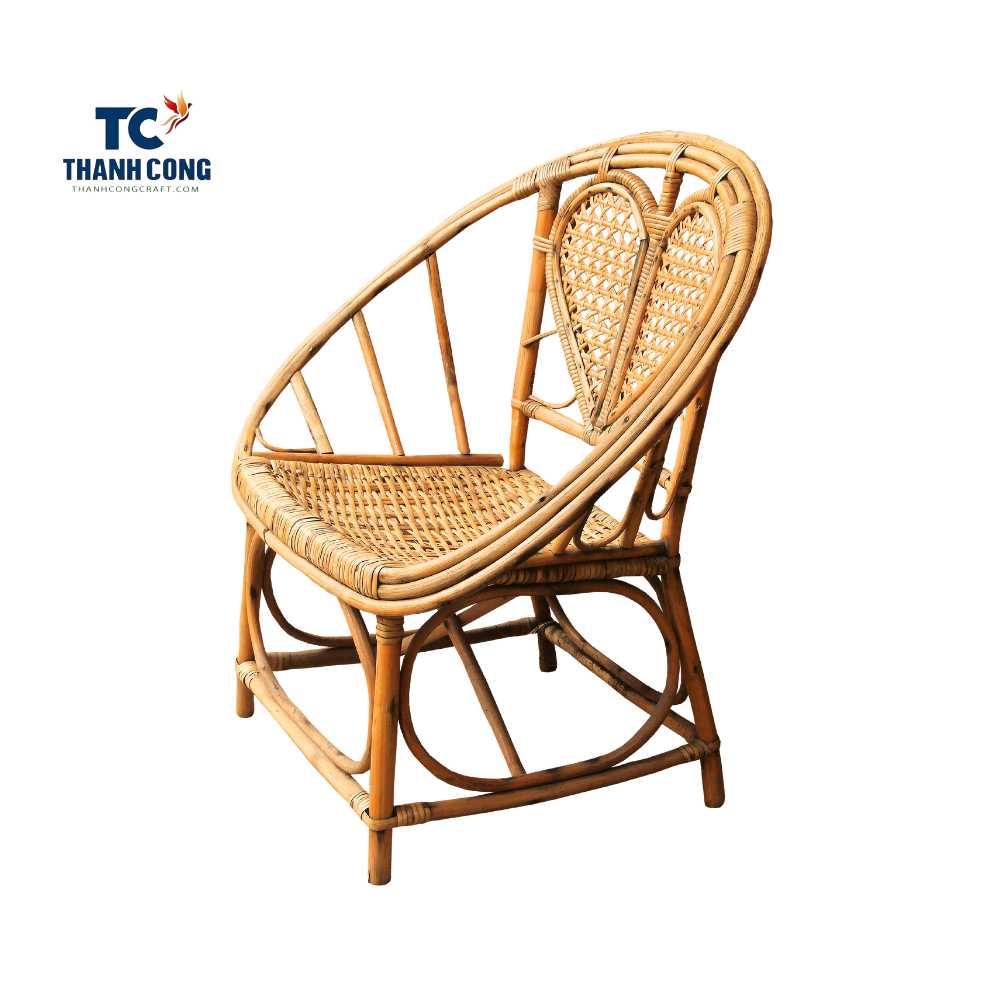Rattan is a type of climbing palm plant that belongs to the Arecaceae family. With a history dating back centuries, rattan has been a favored material for crafting furniture, baskets, and handicrafts. With its natural charm and versatility, rattan continues to captivate with its rustic aesthetic and timeless appeal. This following article is the information to help you explore What is rattan material and the uses of rattan.
Contents [hide]
What is Rattan Material?
Rattan material is a product made from rattan species belonging to the Calamus and Daemonorops of the Areca family, living in natural forests or planted, used and processed.
Because of its long, slender stems, rattan is used for making furniture (boxes, tables and chairs, carpets, curtains, etc), baskets, and various handicrafts. With soft, delicate and meticulous lines, rattan products bring a natural beauty and closeness to nature.
The stems of rattan are flexible, strong, and lightweight, making them ideal for weaving and construction purposes. They are harvested by cutting the canes from the base of the plant and then processed to remove the outer skin, leaving behind the inner core, which is used for various applications.

What does Rattan Look Like?
Rattan looks like bamboo but it has a smaller and solid trunk. It has a distinctive appearance characterized by its long, slender stems or canes. The stems are typically cylindrical in shape and have a smooth texture.
The color of rattan canes ranges from a pale yellowish-brown to a dark brown. When freshly harvested, the outer skin of the cane may have a green hue, which gradually fades to reveal the natural brown color as it ages.
The surface of rattan canes is covered in nodes, which are slightly raised sections that give the stems a segmented look.
Rattan often exhibits a natural sheen or luster, adding to its visual appeal. When used in furniture and crafts, rattan can be left in its natural state or undergo treatments like staining or painting to enhance its appearance and match different styles and preferences.
Properties and Benefits of Rattan
The benefits of rattan as a material include:
Strength and Durability
Rattan material is renowned for its exceptional strength and durability. As a natural material, rattan possesses inherent toughness that allows it to withstand various challenges. Its robust composition enables it to resist bending and breakage, making it a reliable choice for furniture and other applications.
Rattan’s ability to withstand wear and tear is particularly notable, ensuring that it can endure the rigors of everyday use without compromising its structural integrity. When compared to other materials, rattan often demonstrates superior durability, making it a preferred option for those seeking long-lasting and reliable products.

Lightweight
Rattan material is not only known for its strength and durability but also for being lightweight and easy to move. Due to its natural composition and slender stems, rattan furniture and objects are significantly lighter compared to their counterparts made from heavier materials like solid wood or metal.
This characteristic makes rattan furniture highly portable and effortless to relocate or rearrange within a space. Whether you need to shift chairs for a gathering or rearrange your decor, the lightweight nature of rattan allows for quick and hassle-free maneuvering, providing convenience and flexibility in your living environment.
Flexibility
Rattan material exhibits remarkable flexibility, which is one of its notable characteristics. The slender and pliable stems of rattan can be bent and shaped without breaking, allowing for intricate weaving and the creation of unique designs.
This flexibility enables skilled artisans to craft a wide array of rattan products with intricate patterns and textures, showcasing the versatility of the material. From elegantly woven furniture pieces to intricate decorative items, rattan’s flexibility lends itself to endless possibilities in terms of design and craftsmanship.
Moreover, the malleability of rattan also contributes to the comfort of rattan furniture, as it can conform to the body’s contours, providing a comfortable seating experience.

Natural and Sustainable
Rattan material is not only valued for its natural beauty and versatility but also for its sustainability. Rattan is derived from the rattan palm plant, which is a rapidly renewable resource. It grows abundantly in tropical regions, particularly in Southeast Asia, and its cultivation helps preserve forests by reducing the demand for timber. Harvesting rattan canes does not require the plant to be cut down, as the vines can continue to grow and regenerate. This makes rattan a sustainable alternative to other materials that contribute to deforestation.
Furthermore, the process of rattan production has minimal environmental impact. It requires less energy and produces fewer carbon emissions compared to the manufacturing processes of synthetic materials. Rattan furniture is often handcrafted, promoting local craftsmanship and supporting traditional communities.
In addition to its sustainable sourcing, rattan is also biodegradable, meaning it can naturally decompose without leaving behind harmful pollutants. This further reduces its environmental footprint.
Choosing rattan as a material for furniture and other products is a conscious decision to support sustainable practices and contribute to a greener and more environmentally friendly future.
Versatility
Rattan material is highly regarded for its versatility, making it a popular choice in various applications. Its flexibility and pliability allow for intricate weaving and diverse design possibilities. The artistants use rattan material to craft them into an extensive range of furniture pieces, including chairs, tables, sofas, beds, and shelves, both for indoor and outdoor use. Its natural and rustic aesthetic blends well with different interior design styles, from tropical and bohemian to modern and contemporary.
Additionally, rattan is not limited to furniture. It is also widely utilized in the creation of baskets, storage containers, lampshades, trays, and other decorative items. The ability to weave rattan into different patterns and textures makes it a versatile material for fulfilling both functional and aesthetic purposes.
Furthermore, rattan can be combined with other materials such as cushions, upholstery, or glass tabletops to enhance its versatility and provide added comfort and functionality. This combination of materials allows for further customization and adaptation to various needs and preferences.
The versatility of rattan stems from its natural properties and the craftsmanship involved in its production. It offers a wide range of possibilities, making it a versatile and adaptable choice for different applications, styles, and settings.

Resistance to Wear and Tear
Is rattan durable? Yes, Rattan material exhibits impressive resistance to wear and tear, making it a durable choice for various applications. Thanks to its inherent strength and toughness, rattan can withstand regular use without easily showing signs of damage or deterioration.
This resilience makes rattan furniture and products suitable for both indoor and outdoor environments, where they may be subjected to constant use, changing weather conditions, and occasional impacts.
The robust nature of rattan enables it to resist scratches, dents, and other minor forms of damage that commonly occur during everyday usage. Additionally, rattan’s natural flexibility and elasticity help it absorb impacts, reducing the risk of breakage or structural failure.
To ensure the longevity of rattan items, proper care and maintenance are essential. Regular cleaning, avoiding prolonged exposure to direct sunlight and extreme weather conditions, and using protective coatings can further enhance their resistance to wear and tear.
The ability of rattan to withstand the rigors of everyday use and its resistance to common forms of damage make it a reliable choice for long-lasting furniture and products, providing peace of mind and value for investment.
Breathability
Rattan material offers the benefit of breathability, which contributes to enhanced comfort in various applications. The natural woven structure of rattan allows for good air circulation, preventing the buildup of moisture and promoting a fresher and more breathable environment.
In furniture, rattan’s breathability is particularly advantageous for seating and bedding. The open weave of rattan chairs and sofas allows air to pass through, reducing the likelihood of sweat and discomfort during prolonged sitting. Similarly, rattan bed frames and headboards facilitate airflow, preventing the accumulation of heat and humidity, resulting in a cooler and more comfortable sleeping experience.
Low Maintenance
Rattan requires minimal maintenance, typically only requiring regular cleaning with a damp cloth or mild soap solution.
Timeless Aesthetic
Rattan material offers a timeless aesthetic that transcends passing trends and complements various interior design styles. Its natural and organic charm brings a warm and inviting feel to any space, creating an enduring appeal that withstands the test of time.
The earthy tones and intricate woven patterns of rattan evoke a sense of nature and craftsmanship, adding a touch of authenticity to both traditional and contemporary settings. Whether used in furniture, home decor, or accessories, rattan seamlessly integrates into different design themes, from coastal and bohemian to Scandinavian and tropical.
Eco-Friendly Alternative
Rattan is often considered an eco-friendly alternative to materials like wood or plastic, contributing to sustainable practices in the furniture and manufacturing industries.
FAQs
Q1: What is rattan furniture?
A1: Rattan furniture refers to furniture pieces that are made using rattan material. Rattan furniture can include chairs, sofas, tables, beds, shelves, and more, suitable for both indoor and outdoor use.
Q2: Is rattan wood?
A2: Rattan is non-wood forest product used as raw material for the production of handicrafts, household items (furniture) such as tables, chairs or baskets… They are very similar to bamboo, but rattan is easy to decompose. The difference with bamboo is that they are dense, not hollow like bamboo.
Q3: Can rattan funiture get wet?
A3: Yes, Rattan furniture can absorb water when it gets wet. Rattan is derived from the stems of a type of palm tree and is known for its flexibility and durability. However, it is not completely waterproof.
The above article is about rattan and “What is rattan material“. If you have any further questions, don’t hesitate to email us at info@thanhcongcraft.com or message us at WhatsApp: +84967485411. Hope to serve you soon! Best regard!
Check out:


